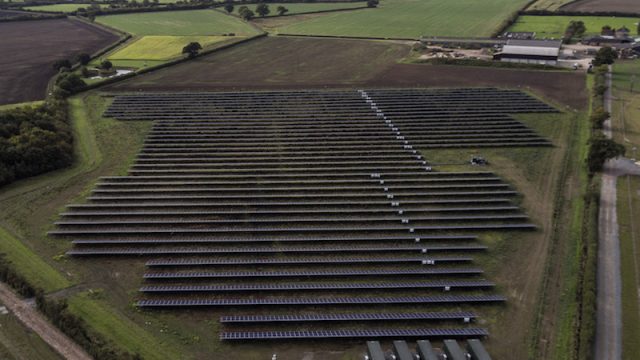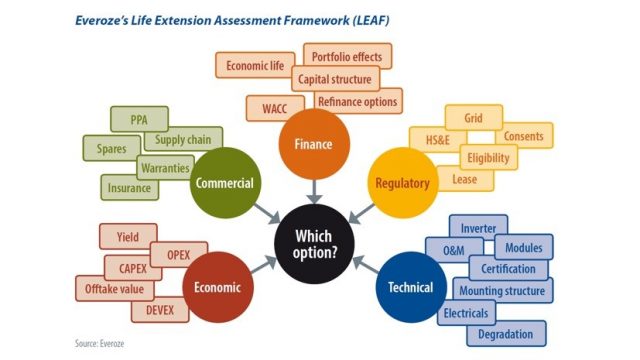Joining the Dots: What does COP25 mean for you?
As published by A Word About Wind on the 13th December 2019
by Jo de Montgros, founding partner at Everoze and Destination 0
In between election hustings, Christmas shopping and the usual year-end weekly traffic, it’s easy to have missed the updates coming out of United Nations COP25 conference in Madrid, which is set to end today. But we’ve seen and heard some interesting discussions.
For example, alongside showcasing innovation solutions in the ‘green zone’, negotiators have been grappling with structuring commitments, technical feasibility, global equity and a ‘just transition’. At the end of the first week of talks, the news that delegates had been unable to make any progress on aligning reference timetables didn’t bode well for clear action emerging at the conference’s close.
With the focus on these questions at COP25, it’s reasonable to expect further solutions to emerge at next year’s COP26 in Glasgow and future events. But I also don’t think it’s reasonable to expect tough climate action to be achieved through political alignment alone.
Whether we are engaged or not, whether we are climate change believers or deniers, our world is likely to change, and quickly. We’ve become accustomed to rapid changes: advanced technology, constant communications and a quality of life that would have seemed unimaginable 50 years ago. But the changes resulting from climate action or inaction are unpredictable and include further tension between mitigation and adaptation.
In wind and wider renewables, we can fall back on strong signals for outlook and growth projections. But in a rapid carbon reduction pathway, we must think hard about how much market intervention will be required to ensure that delivery can be maintained.
We must be aware of how international political instability and trade negotiations could affect access or pricing for raw materials, and what commercial protections may emerge to secure such access. If strong action on climate change is delayed by ongoing political wrangling, this may force firms to make sudden deep cuts further down the line and might this lead to an economic shock.
Of all of the signals out there, the one I keep on coming back to is the vision that in five or ten years, zero carbon will be as culturally embedded in organisations as zero harm is from an HSE perspective. You would struggle to be an employee in any wind company without knowing exactly what your own HSE roles and responsibility are, with roles throughout your organisation equally well mapped out.
I also believe that carbon will soon be traced through company procurement processes and audited through standardised tools. While I accept that the jury is still out on how much carbon reductions may depend on market pricing, voluntary mechanisms or legislation, it is hard to imagine a world where some form of the above doesn’t arrive unless we end up in a do-nothing scenario.
For now, I’ll take the positive view that the do-nothing scenario, a four-degree temperature rise and conflict resulting from dramatic reductions in the carrying capacity of the planet are off the table.
With the growing consensus that we’ll all be at zero carbon by 2050 or earlier (2045 for Scotland), and likely need to target a 50% reduction in carbon by 2030 (70% for Denmark), it would be sensible to expect companies and organisations to follow suit with a strong set of net zero carbon policies and reduction measures already underway. Yet strangely, when I ask “What are you doing?” of contacts in my renewable energy network, the result is often tumbleweed and a rapid change of topic. Many have been to conference discussions touching on net zero, or considered the business opportunities that might result from green policies, but are yet to consider proactive measures within their own day to day environment.
Where to start?
Starting the process isn’t a huge hurdle. It’s not necessary to have a pathway fully mapped out, as plans will need to develop as markets move, regulation changes and usage behaviour adapts.
Quick wins can often be identified, or nudges to purchasing and procurement policies. For example, Everoze was recently delighted to receive a request for proposal from a client seeking details on the balance of scope optimisation against carbon impacts of a long-term site monitoring contract.
Many progressive organisations such as Orsted and Ovo have also published plans – the Greener Possibilities White Paper and Plan Zero respectively – and a large body of reference information and support are relatively accessible for those looking to start this process.
I’ll be making as much of this available as possible through 2020 via project ‘Destination 0’, including access to a wide network of topic specialists.
The price of inaction may be low today, but anyone who has ever initiated a change program within an organisation will recognise that organisational inertial lag might prevent rapid change down the line. And those who are moving first in this area have already recognised the benefits of leading in this field, including customer and staff engagement, risk management or competitive positioning.
So, when you finally get a chance to put your feet up by the fire this Christmas, maybe ponder the question “What will I do?”. It could lead to the best New Year’s resolution you’ve ever made.






